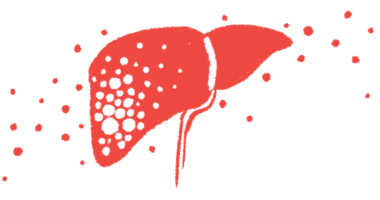Trikafta may help free up sinus airspace in people with CF
Six-month study finds larger sinus cavities but mixed results on symptoms

Six months of treatment with Trikafta (elexacaftor/tezacaftor/ivacaftor) helped open the nasal and sinus passages in people with cystic fibrosis (CF), a study reports.
For many people with CF, these passages — which make up the sinonasal cavity — often become inflamed or develop growths and infections. Treatment with Trikafta, a CFTR modulator, has been shown to help clear the nasal passages and surrounding sinuses (air-filled cavities).
“We see that the airspace responds to treatment by increasing both surface area and volume,” the researchers wrote.
The study, “Effects of Elexacaftor/Tezacaftor/Ivacaftor on the Sinonasal Airspace in Cystic Fibrosis,” was published in The Laryngoscope.
How CF leads to chronic sinus inflammation
CF is a genetic disorder that causes the body to produce unusually thick, sticky mucus. It is caused by mutations in the CFTR gene, which lead to a defective or absent CFTR protein that normally helps cells maintain a balance of salts and water.
This thick mucus can build up in different organs and tissues, causing a wide range of symptoms. In the sinonasal cavity, it can increase the risk of infections and chronic inflammation, leading to issues such as congestion and facial pain.
“This study aims to enhance the understanding of [Trikafta’s] impact on both sinonasal airway structure and clinical outcomes, thus elucidating any possible pathophysiological [disease-related] mechanisms underlying quality-of-life enhancements observed following CFTR modulator therapy,” the scientists wrote.
The analysis included 18 children and adults with CF, ages 12 to 46, who received Trikafta. Before starting treatment and after six months, the researchers performed CT scans of the sinonasal cavity and measured changes in sinonasal symptoms.
During treatment, participants showed a significant decrease in sinonasal symptom severity based on a questionnaire called SNOT-22 (22-item Sinonasal Outcome Test). This tool measures quality of life in people with chronic rhinosinusitis (long-standing inflammation of the nose and sinuses). There was also a significant reduction on the Lund-Mackay scale, a measure of radiographic disease severity, indicating more open airways after treatment.
Using CT scans, the team created detailed, 3D models of each person’s sinonasal space. They estimated surface area and volume, noting significant increases in both after treatment.
Bigger airspace tied to better imaging scores
There were significant correlations between changes in surface area and volume and changes on the Lund-Mackay scale. People who had larger increases in surface area and volume had greater decreases in Lund-Mackay scores, indicating more open airways. “This robust correlation … provides strong evidence that the therapeutic effect of [Trikafta] is directly related to the degree of anatomical modification achieved during the intervention,” the researchers wrote.
However, there were no significant correlations between these changes in shape after treatment and changes in symptom severity as measured with SNOT-22. “This suggests that the degree of volumetric expansion of the sinonasal cavity following [Trikafta] does not correlate with the extent of symptomatic improvement as measured by SNOT-22 scores,” the team wrote.
Overall, the investigators said these findings validate measuring the sinonasal space when treating chronic rhinosinusitis in CF. However, they noted that the short treatment period and small number of participants are limitations of the study. “Increasing sample size in future studies is necessary to determine whether differences observed can be applied to the whole [CF] population,” they wrote.








